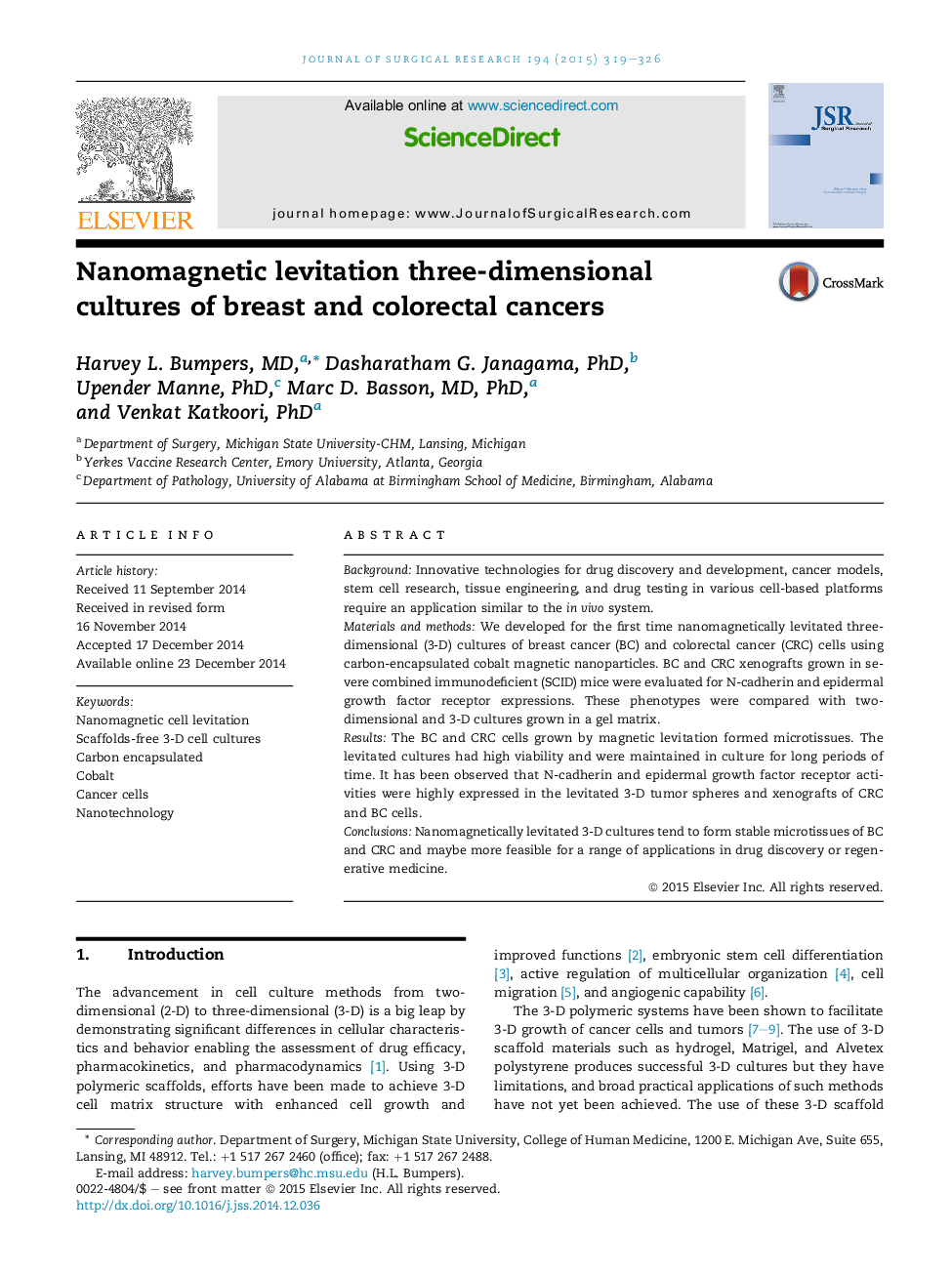| Article ID | Journal | Published Year | Pages | File Type |
|---|---|---|---|---|
| 4299426 | Journal of Surgical Research | 2015 | 8 Pages |
BackgroundInnovative technologies for drug discovery and development, cancer models, stem cell research, tissue engineering, and drug testing in various cell-based platforms require an application similar to the in vivo system.Materials and methodsWe developed for the first time nanomagnetically levitated three-dimensional (3-D) cultures of breast cancer (BC) and colorectal cancer (CRC) cells using carbon-encapsulated cobalt magnetic nanoparticles. BC and CRC xenografts grown in severe combined immunodeficient (SCID) mice were evaluated for N-cadherin and epidermal growth factor receptor expressions. These phenotypes were compared with two-dimensional and 3-D cultures grown in a gel matrix.ResultsThe BC and CRC cells grown by magnetic levitation formed microtissues. The levitated cultures had high viability and were maintained in culture for long periods of time. It has been observed that N-cadherin and epidermal growth factor receptor activities were highly expressed in the levitated 3-D tumor spheres and xenografts of CRC and BC cells.ConclusionsNanomagnetically levitated 3-D cultures tend to form stable microtissues of BC and CRC and maybe more feasible for a range of applications in drug discovery or regenerative medicine.
